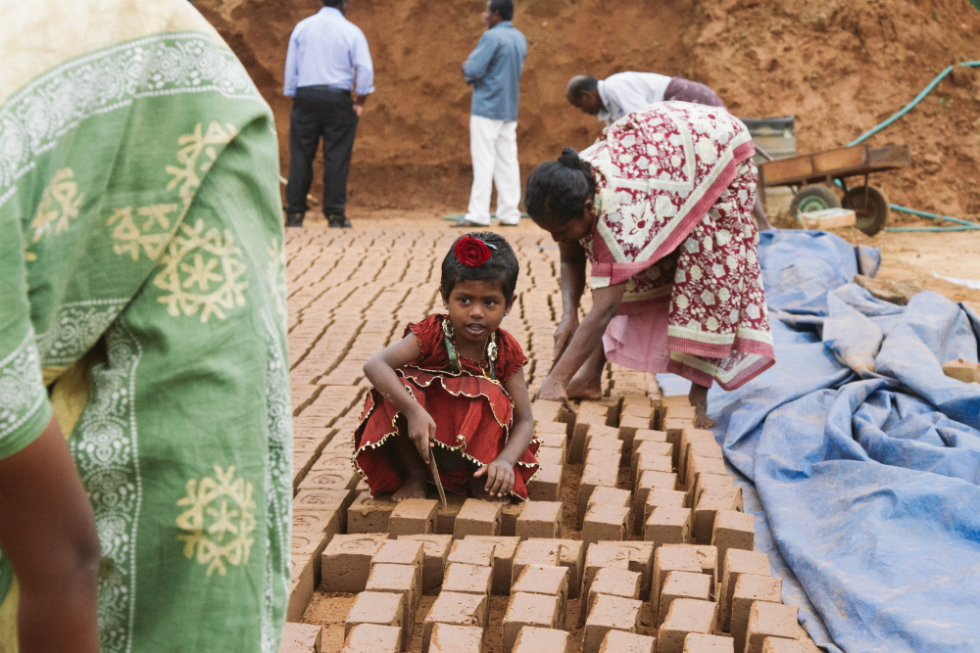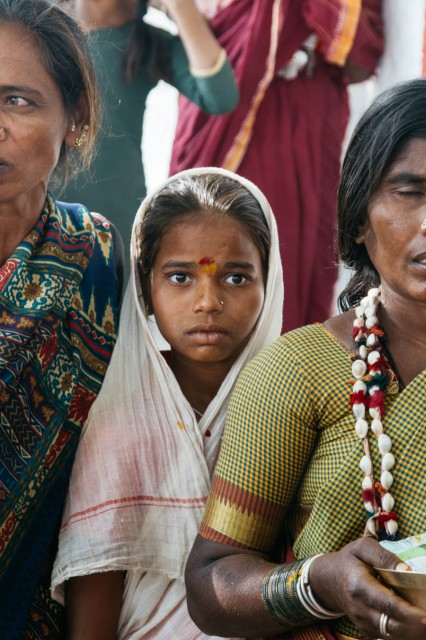Acknowledging The ‘Untouchables’ — Broken Lives: Slavery In Modern India Reviewed

Oscar-nominated short film and powerful photography highlight the modern-day, global reality of slavery, finds James West…
One of the most common complaints directed at the International Slavery Museum (ISM), based in Liverpool, is that the institution’s representation of slavery is heavily framed by the transatlantic slave trade — that is to say, the triangular trade of human and economic capital between West African, Caribbean and American colonies and European colonial powers which peaked during the 18th century.
Yet systems of slavery did not begin with the transatlantic trade; nor were they confined to the plantation economies of the Caribbean and the Americas. Similarly, slavery did not end with the Slavery Abolition Act of 1833, or the Emancipation Proclamation of 1865. The Global Slavery Index estimates that there are nearly 30 million people who remain enslaved through different forms today, including child trafficking, forced labour, sexual exploitation and domestic servitude. As activist and historian Kevin Bales has argued, slavery continues to be a “global reality”, even as its evolving form and function makes it frequently difficult to see.
The new exhibition Broken Lives: Slavery in Modern India aims to make some of these pervasive forms of modern slavery visible. In doing so, it continues the ISM’s development of its Campaign Zone – an exhibition and community space dedicated towards raising awareness of modern forms of slavery. Like the Museum’s previous exhibition Brutal Exposure: The Congo, this project was developed in collaboration with an external human rights organisation. In this instance, the partner is the Dalit Freedom Network, whose work focuses on helping the Dalit population in India.
Dalit, meaning ‘oppressed’ in Hindi, is the self-chosen political name for those who were formerly considered as ‘untouchables’ under the Indian caste system. Systemically oppressed and segregated for centuries, Dalits continue to face social marginalisation, which leaves them vulnerable to exploitation and coercion into forms of indentured servitude, forced labour and sexual exploitation. The Dalit Freedom Network estimates that up to half of all the victims of modern slavery globally can be found in India, and that the vast majority of those enslaved are Dalits.
We are drawn into Broken Lives by attractive graphics on both entrance walls, which visualise major hotspots for modern slavery in India, and which provide context for its disproportionate impact the Dalit population. Depending on the region, practises range from bonded labour, bride trafficking, and domestic servitude, to ritual sex slavery and even organ harvesting. Visitors are then ushered into the main exhibit space which is split into three sections. The Brick Kiln room focuses on debt slavery within the Indian construction market; the Cotton Mill focuses on child labour within the garment industry; and the Wedding Ceremony focuses on ritual sex slavery and abuse.

The highlight of the Brick Kiln section of the exhibition is the Oscar-nominated short Kavi (2010), a 20-minute long film by Gregg Helvey. The film, which takes its name from its young protagonist, was made during Helvey’s time as a student at the University of Southern California. It is a fictional account of an Indian boy, played by Sagar Salunke, who yearns to escape the brick kiln where he is forced to work.
An impressive directorial debut, the film powerfully complements other elements of the exhibition — most notably a brick graphic printed on the floor which visitors are forced to walk over. As the graphic informs us, child labourers are used to turn the bricks in the sun, as their light weight ‘means they can walk across the bricks without causing any damage.’ A poignant moment in the film sees Kavi stand up to his oppressors by deliberately walking across and damaging the bricks, creating a moment of solidarity between actor and audience. Parents should note that the film contains scenes of mild violence that may be upsetting to younger children.
The Wedding Ceremony section of Broken Lives profiles the ‘jogini’ or devadasi practise: a form of ritual slavery where young girls are ‘married’ to a diety and then given to a village elder to be sexually exploited. When the elder tires of them, Joginis become the ‘property’ of the village: ‘to be used by any man, anytime, anywhere.’ The exhibition contrasts lush visual displays with the distressing accounts of women who were coerced into serving as Joginis. These accounts are reinforced by a fictional re-enactment of a Jogini ceremony, where a terrified young girl is offered up for dedication and ‘marriage.’
The final section of the exhibition, the Cotton Mill, focuses on the more than 200,000 women and girls who have been trafficked into forced labour within the garment industry. This section draws a direct connection between modern slavery and the complicity of Western governments by spelling out the link between cotton mills in Tamil Nadu and high street retailers in the UK and internationally. Visitors are also encouraged to take action by supporting the Make Fashion Traffik-Free campaign to help raise awareness and to mobilise consumers.
For visitors who have seen previous exhibitions, such as Brutal Exposure and Oil Booms, Delta Burns, it would be wise to adjust your expectations for Broken Lives. The latter offers a more rounded multimedia experience with a much greater emphasis on raising audience awareness, but focuses on education over atmosphere. While many of the photographs used in this exhibition are beautifully shot — particularly the Jogini images by American photographer Rachel Robichaux – the overall curation and design lacks the moody presentation or visceral nature of previous exhibitions.
In a related manner, because the majority (although not all) of the figures profiled here are actors, this creates a certain distance between audience and subject which mediates its impact. It is clear that the exhibition has been painstakingly planned and put together, but at points this feels a little too methodical. However, it certainly succeeds in offering an immersive educational experience, which provides a rich introduction to the scope and scale of modern slavery in India. Through doing so, Broken Lives challenges visitors to reassess their own understanding of what slavery is, and was, and powerfully outlines its continuing human cost for the Dalit population.
James West
See Broken Lives: Slavery in Modern India at the International Slavery Museum, Liverpool, until 24 April 2016 — free entry
To learn more about the work of the Dalit Freedom Network, visit their website, or follow them on Twitter @dfnuk #BrokenLives
Read James West on Exposing The Congo and Black Gold And Delta Blues





